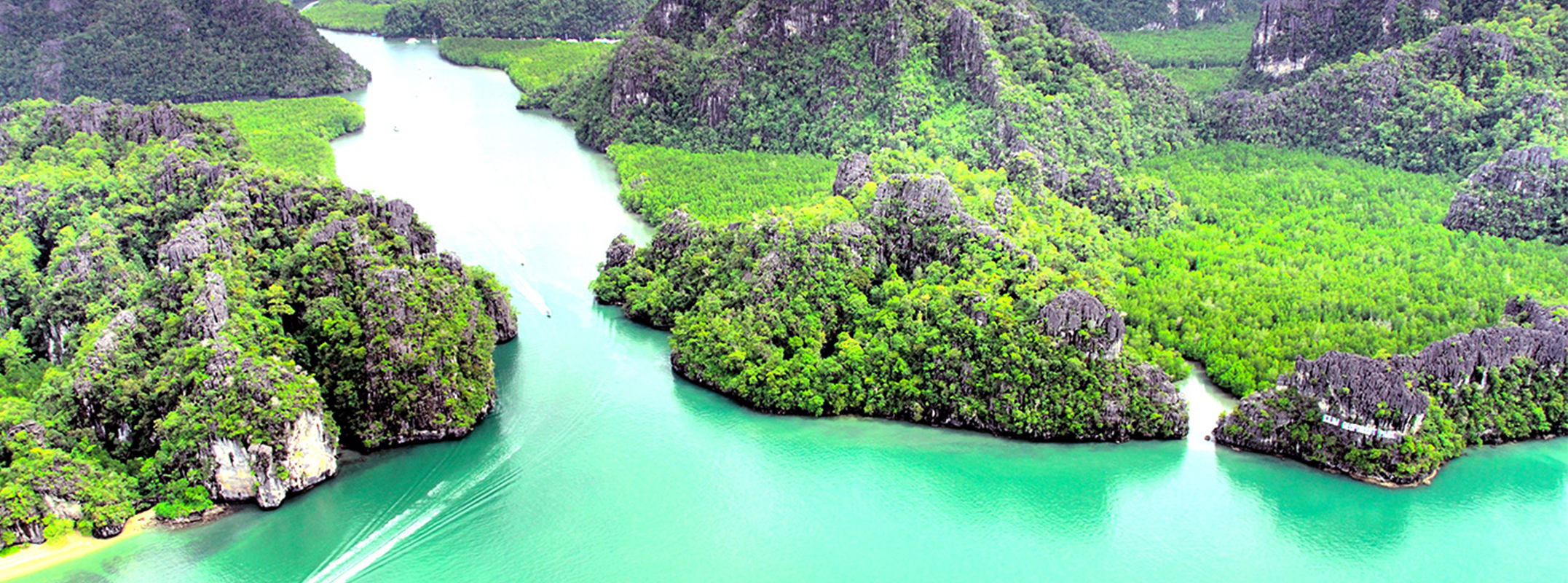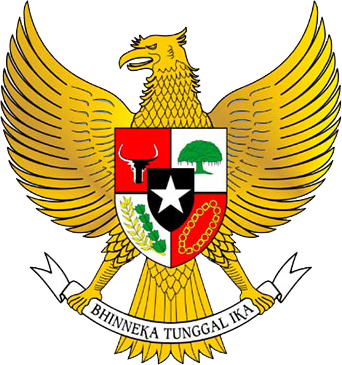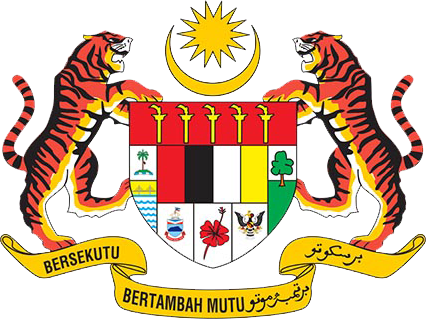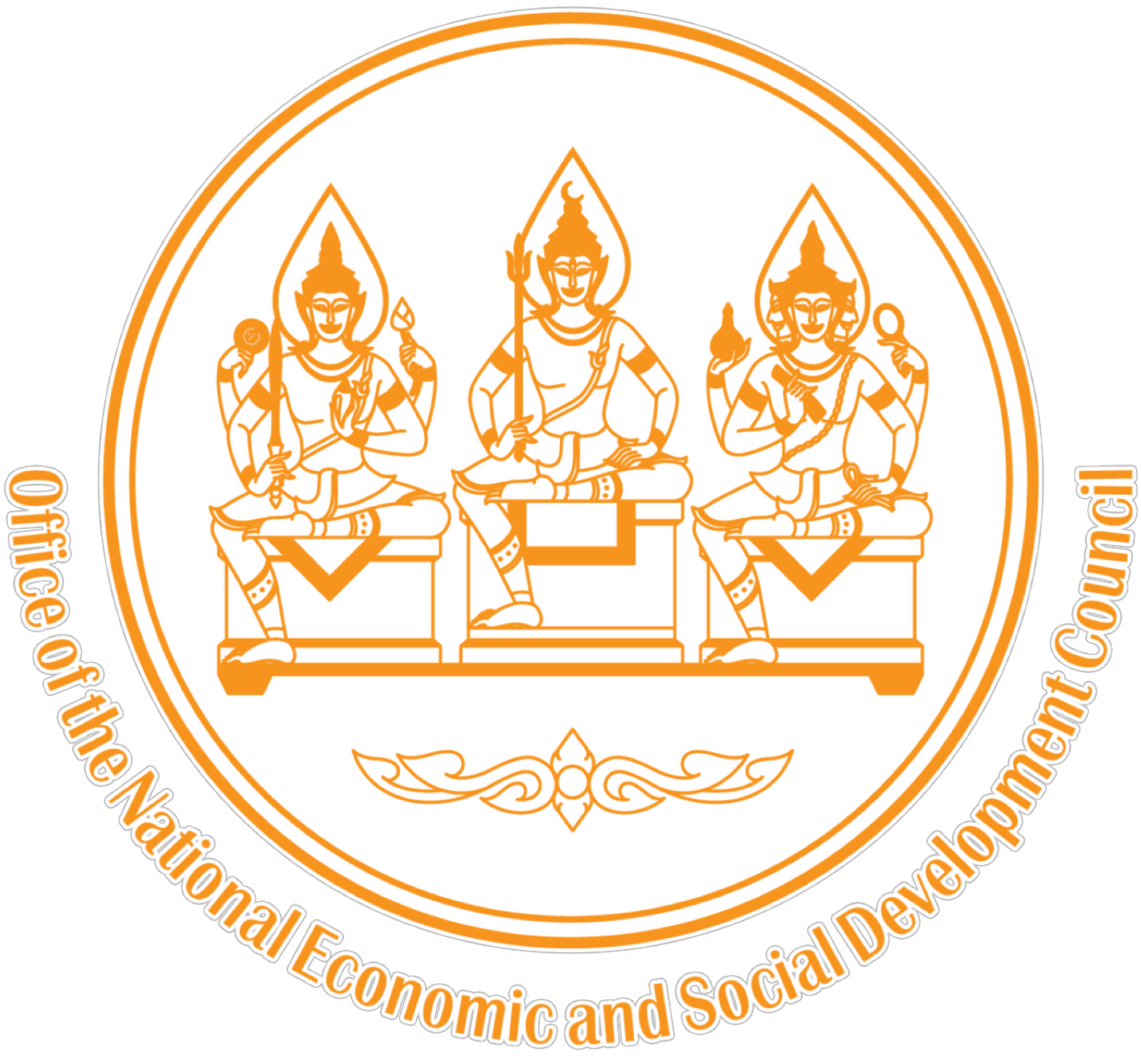KEDAH
STORY ABOUT KEDAH
Kedah Darul Aman lies between Perlis in the north and Perak in the south and forms one of the northern states of Peninsular of Malaysia. It has an area of 9425 sqkm and has a population of more than 1.5 million people.
Primarly agricultural, Kedah offers a pleasing rural landscape which can take on different hues depending on the seasons of padi. The country side is greenest when the newly planted padi is sprouting, turns a golden yellow at harvest time and turns into a brown, earthy hue after the harvest.
It appears that much may be hidden under the rolling plains of rice, for Kedah once the cradle of an ancient civilization, the threads of which are just beginning to emerge from slow excavation of various historical sites found in the state.
Alor setar is the capital of Kedah and the seat of government and royalty. It is also the main commercial centre of the state. Langkawi, the most well-known island on the peninsular, falls under Kedah’s jurisdiction. Other district include Kubang Pasu, Padang Terap, Kota Setar, Sik, Yan, Kuala Muda, Baling, Kulim, Bandar Baharu, and Pendang.
PLACES OF INTEREST
1) GUNUNG JERAI
Located south of Alor Setar on the main trunk road leading to sungai petani and Butterworth, Gunung Jerai (Kedah Peak) offers a stunning view of the countryside and the seas around Penang and Langkawi. This forest-clad limestone outcrop is 1,206 m. above sea level and was an important landmark for sailors.
The Sungai Teroi Forest Park is at the base of the hill and offers good camping spots. A 13km winding road leads up from the park to the peak while the more adventurous can attempt a hike on a well-used trail about 3km beyond the park lie the ruins of 6th century Hindu shrine.
Nearby is the Foresty Museum with exhibits of local trees and wood-related products found within the area from the museum there is a forest trail leading to a waterfall and bathing pools.
2) Bujang Valley
West of the town of Sungai Petani, Bujang Valley was the scene of a thriving Hindu-Buddhist civilization dating to the 5th Century AD. This kingdom traded with India, Cambodia and Srivijaya and was visited by the Chinese monk I-Tsing in 671 AD. It became part of the Sriwijaya empire of Sumatra in the 7th Century AD and reached an architectural peak by the 10th century AD. Over 50 archeological sites containing the ruins of Hindu and Buddhist temples have been found. The temple ruins stretch all the way from Gunung Jerai to Kuala Muda in the south. The ruins were first excavated by British archeologist Quatrich-Wales in 1936.
Beside the Bujang River 2km north of the village of Merbok is Lembah Bujang Archeological Museum which display some pottery shards, ceramics and stoneware dating back 1,500 years. Chinese porcelain, stone carvings, Indian tridents and gemstones from the Middle East are also displayed.
But the most exciting find are the temples. In 1997, two sites of 600-year old chandis were unearthed. Most prominent is the 1,000 year old Candi Bukit Batu Pahat.
3) Bukit Hijau Recreational Forest
This is situated in the heart of the Gunung Inas Virgin Forest Reserve in Baling. It is 54km from Kulim town and takes about an hour to reach. This rain forest reserve contains an incredible variety of flora and fauna. Picnicking is allowed at a seven tiered waterfall which is noted for its pure, crystal-clear water. The Recreational Forest is managed by the Forestry Department.
4) Pantai Merdeka
Kedah favourite beach on the mainland, Pantai Merdeka is in the Kuala Muda district about 30km from Sungai Petani of 40km from Butterworth. It long, white, sandy beach attracts a heavy weekend crowd. There are island-hopping trips to the neighboring islands of Pulau Bidan, Pulau Telur and Pulau Songsong available on hired boats. There is a cave close to the beach where some historical artefact have been found.
5) Pedu Lake
Pedu Lake, about 80km fom Alor Setar and only about 5km from the border with Thailand, offers a good vacation in a rainforest environment complete with international-class resort accommodation. Kampung style chalets with full facilities are set deep within the thick tropical rainforest. The crystal-clear waters of the lake are suitable for water sports and there are facilities for canoeing, wind surfing, fishing, and jet-skiing. Visitors might spot deer, elephants, bears, and wild boars in the jungle. Bird watching is also a favourite activity. There is an 18-hole golf course within the resort.
6) Gunung Keriang Recreational Park
Located 12km from Alor Setar, the park is a good area for jungle trekking and camping. Gua Keriang, a cave located nearby is worth checking out.
7) Alor Setar
The capital city of Alor Setar is north of Penang on the North-South Expressway leading to the Thai border. Having been a Thai vassal state at some point of its history, various buildings show Thai architectural influences. The town is also notable for being the birthplace of two of the country’s most prominent leaders, the first Prime Minister Tunku Abdul Rahman Putra Al-Haj and the 4th and 7th Prime Minister, Tun Dr. Mahathir Mohamad.
8) Balai Besar
Located near the main padang or town square, the Balai Besar was built in 1898 and is still used for royal ceremonies and some state of functions. This edifice which serves as a great hall is supported on tall pillars and decorated with Victorian wrought-iron designs. The Thai influences in its architecture are seen in some intricate wood carvings.
9) Balai Nobat
The Balai Nobat, houses the sacred instruments of the Royal Orchestra, played only during royal ceremonies of inaugurations, weddings, and funerals. The instruments consist of three drums, a gong, and flute, which produce the haunting strains of nobat music.
10) Pekan Rabu
Pekan Rabu (Wednesday Market) is a bazar, so named because it was usually held on a Wednesday. The bazar is open every day from morning until night and is one of the main attractions for visitors. One can find all kinds of local farm produce, handcraft, local delicacies, fruits, garments and trinkets.
11) Royal Museum
Just beside the Balai Besar is the Royal Museum which was once the royal palace. It contains the regalia of the Kedah royal family. There are displays and memorabilia related to the life and times of Malaysia’s first prime minister Tunku Abdul Rahman Putra Al-Haj, who was also a prince of the Kedah Royal family.
Hunting trophies can be found in the Astaka Hall. The museum is open daily from 10.00 am to 6.00 pm. It is closed on Friday from noon to 3.00 pm.
12) Balai Seni Negara
The Balai Seni Negeri or sate art gallery is within the vicinity of the town square in a beautiful colonial building. Some paintings, antiques and artefacts found in the state are on display here.
13) Zahir Mosque
Facing the Balai Besar is the Zahir Mosque, the state mosque completed in 1912. One of the oldest in Malaysia, it has distinctively Moorish architecture, with a main dome and several smaller domes surrounded by minarets.
14) State Museum
The state museum (Muzium Di Raja) is another fine example of local architecture hinting strongly of Thai influence in its majestic design. Built in 1936, it houses a collection of Kedah’s royal and cultural heritage.
15) Rumah Kelahiran Tun Dr.Mahathir
Located at No.18, Lorong Kilang Ais, Sebarang Perak, is childhood home of the Tun Dr. Mahathir Mohamad. A traditional attap and wood house, it contains historical memories and memorabilia related to the life of Tun Dr. Mahathir Mohamad.
16) Kuala Kedah
Located 15km west of Alor Setar on the coast, Kuala Kedah is a busy fishing village where there is a large jetty for ferries to Pulau Langkawi Kuala Kedah is also noted for its good seafood restaurants and a local delicacy made of thick rice vermicelli with spicy fish gravy called “laksa kuala kedah”
17) Langkawi
The Langkawi island is a cluster of 99 islands just off the coast of Kedah, close to Perlis and just below Thailand. Langkawi, noted for its legends and beautiful views is the most developed in the group. It has good beaches, abundant marine life and basically offers an idyllic retreat from the urban jungle. A duty-free port, this island of scenic, tranquil landscapes has become a favourite destination for local and international visitors. Langkawi is accessible by ferry from either Kuala Kedah (60 minutes) or Kuala Perlis (40 minutes). Ferries usually leave on the hour from 9.00 am to 6.00 pm. Both ferry terminals offer ample parking facilities at about RM5 per day. There are daily flights to Langkawi from Kuala Lumpur which land at Padang Matsirat airport.
The entire cluster of island covers an area of 47,850 hectares and is separated from the mainland by the Straits of Melaka. Of the 99 islands in the group only Pulau Tuba, Pulau Singa, Pulau Dayang Bunting, and Pulau Langkawi and inhabited. Mainly a padi-growing region and fishing town, Pulau Langkawi’s residents have diversified into more commercial and tourism related activities. The main commercial areas are in the towns of Kuah, Padang Matsirat and Padang Lalang.
The island of Langkawi is steeped in legend and there are some fascinating stories connected to several tourist attractions. Visit the Tomb of Mahsuri, the field of Burnt Rice, the Hot Springs and the Beach of Black Sand. Boat tours are organized to Tasik Dayang Bunting, (Lake of the pregnant Maiden), Gua Cerita (Cave of Stories) and Gua Langsir.
18) Kuah
Kuah is a thriving town with many duty-free shops and handcraft centres. This main commercial hive of Langkawi is quickly expanding as old wooden buildings make way for concrete development. Local residents enjoy a good variety of household items bought cheaply, these are mostly imported from Thailand. Kuah has several good restaurant and the Malay and Indian fare is notable as well as seafood cooked Chinese style. There are shuttle vans and taxis that take visitors from Kuah to the resort hotels further inland.
19) Dataran Lang
Near Kuah Jetty is the Dataran Lang ar Eagle Square, which has a magnificent 18m marble eagle as a centerpiece. In the same area is an amphitheater, two covered terraces, two restaurants, and various tableaus giving the legends of the island.
20) Makam Mahsuri
Located 12km north-west of Kuah it marks the spot where mahsuri a famous legendary figure, was buried. In the vicinity there are souvenir shops and a kampung house containing ancient artefacts.
21) Padang Matsirat
Padang Matsirat or the ‘field of burnt rice’ is the place where villages torched the path fields to prevent Siamese invaders from getting the rice grains. Villagers maintain that to this day heavy rain sometimes brings traces of burnt rice grains to the surface.
22) Galeria Perdana
The Galeria Perdana at Kulim, about 10km from Kuah, houses an impressive collection of over 2500 state gifts and awards presented to the former Prime Minister of Malaysia, Tun Dr. Mahathir Mohamad and his wife. The exhibits include fine crystal ware and gifts of wood, leather, silver, copper, pewter, ceramics and glass. There are also musical instruments, Islamic art and craft, textiles and weapons. A part of the display includes cars and four-wheel drive vehicles.
23) Craft Cultural Complex
The craft cultural complex is located on the northern coastline of Langkawi island in the vicinity of Teluk Yu, about 30 minutes drive from the airport or 45 minutes from Kuah town. Nestled on a hillside overlooking the sea, the magnificent complex offers a wide range of Malaysian handcraft such as delicate hand-drawn batik and intricately carved silverware.
24) Pantai Cenang
About 25km southwest of Kuah is the famous beach of Pantai Cenang where most of the beach chalets and resorts are located. It is a lively beach with a number of restaurants and bars offering good food and drinks. There are facilities for sailing, canoeing, snorkeling and fishing you can also hire boats for island hopping here.
Opposite Pantai Cenang is the island of Pulau Rebak. At low tide a sandbar allows visitors to walk to Pulau Rebak and view the marine life caught in the tidal pools. Not far off is another island worth exploring called Pulau Tepor, which can be reached by a hired boat from Cenang Beach.
25) Langkawi Book Village
Langkawi Book Village (Kampung Buku Malaysia-Langkawi) based on the international Book Village concept is the 19th book village and the only one in Malaysia. Located at the foot of Gunung Raya, it is a 10 minute drive from the airport or about 15 minutes sway from the Kuah Jetty.
The Collection of books ranging from literature to eligion is arranged in six different exhibits, each with is own kampung style house. The book village is open from 9.30 am till 6.00 pm daily.
Along Pantai Cenang is the underwater world Langkawi. One of the largest aquariums in Asia, it has a 15m long walk through tunnel from which you can view more than 5000 kinds of marine life in over 100 tanks. The building is a duty-free shopping complex.
26) Laman Padi
This padi museum offers an insight into the many activities and implements involved in the cultivation of padi. There are charts, photographs and artefacts in the museum. The complex also houses a roof-top garden with fragrant padi plots and a rice farm where visitors can participate in padi planting activities. A restaurant offers traditional Malay food and cakes using rice as the main ingredient. Other attractions include a herbal garden, souvenirs and handicraft. Rice-based food demonstrations, festivals and theme exhibitions are also held here. Laman Padi is located in the vicinity of Pantai Cenang in Mukim Kedawang and is open daily from 10.00 am till 6.00 pm.
27) Pantai Tengah
At the southern end of Pantai Cenang is another stretch of quitter beach known as Pantai Tengah which curves past a rocky point. There is less hotel development here but like Pantai Cenang, there are sailboats, catamarans and canoes for hire. Nearby is the Langkawi Golf Club, an 18 hole golf course which fronts the beach.
28) Air Hangat Village
The air hangat village, a two-hectare complex has an 18m riverstone mural as a highlight and a three-tier hot spring fountain. It also contains a theatre restaurant. At scheduled times, there are demonstrations of cultural dances, traditional games, handicraft-making and activities like rice planting and milling
29) Telaga Tujuh (Seven Wells)
If you take a 2.5km walk from Pantai Kok you will reach Telaga Tujoh or Seven Wells so called because this freshwater stream cascades about 100m down a hillside through seven pools. The slippery rocks on the lower pools are like slides which children thoroughly enjoy. The area offers a refreshing escape for a day.
30) Gunung Matcincang and Gunung Raya
Not far from Pantai Kok, into the interior, this area is popular for jungle trekking into the hilly terrain of Gunung Matcincang or Gunung Raya. The effort is rewarded with glimpses of exotic birds, wild orchids and tropical flora and fauna. It is also noted for several species of colorful butterflies.
31) The Burau Bay Resort
Not far off is the Burau Bay Resort, which has an idyllic beach set around a pretty bay.
32) Teluk Datai
Teluk Datai to the north-west of the island is way off the main road but it has the most exclusive golf course on the island. There is a beach near the resort meant mainly for resort guests. There are several jungle trails that take you down to the sea. There is a crocodile farm on the way to teluk datai where visitors can view the crocodiles and be entertained to shows in the mornings and afternoons.
33) Tanjung Rhu
At a Padang Lalang there’s a roundabout with a turn-off to the north to Tanjung Rhu. The beach is lined with whispering casuarina trees and has a pleasing, relaxing feel. Tanjung Rhu has one of Langkawi’s better breaches. The shallow water makes it fine for swimming and a sandbank links it to a nearby rocky outcrop. The Gua Cerita or Cave of Legends is just around a promontory and can be reached by boats that are hired on the beach.
34) Pantai Pasir Hitam
2km west of Tanjung Rhu is Pantai Pasir Hitam, a beach streaked with black sand. The Black streaks are caused by the deposits of mineral oxides from a nearby spring. The sea in the area is dotted with large boulders. Along the beach is a jetty where fishing boats moor. Attractions include food and souvenir stalls that sell local crafts and trinkets.
35) Pulau Dayang Bunting
This jungle-clad island lying just south of Langkawi makes an interesting island-hopping stop. Marble is quarried on the island and shipped to the mainland for processing. In the interior is a small freshwater crater lake known as Tasik Dayang Bunting or the lake of the pregnant Maiden. A tranquil spot, the water is excellent for a cool swim. Legend has it that a childness couple drank the fresh waters of the lake and had a baby girl. The story is also told of a white crocodile or its spirit, reputed to live in it.
36) Gua Langsir
To the north of the lake is Gua Langsir, which is reputedly haunted. The belief may have come about because of the noises made by thousands of bats which live in the interior of the 91m high cave.
37) Pulau Singa Besar Wildlife Sanctuary
This island is a wildlife sanctuary which preserves some species of monkeys, mousedeer, iguanas, peacocks and a variety of birds. The waters surrounding it have been designated a marine reserve. The island does not contain chalets or resorts but camping is encouraged and there are decent facilities for campers.
38) Pulau Payar Marine Park
Located 30km south of Langkawi. This marine park extends over a number of islands with pulau Payar being the largest. It takes three hours to get there by chartered boat. Permission to visit must be obtained from the Fisheries Department at Alor Setar. There is a floating platform moored off pulau Payar which has a restaurant and under-water observation chamber to view the marine life surrounding a reef. It is a good area for snorkeling or taking rides in glass-bottomed boats.
SOURCE:
- Image: https://www.malaysia.travel/peek-into-malaysia/sketch-your-journey/20-destinations-in-malaysia-for-the-eco-traveler
- Info: IMT-GT Tourism Book by Ministry of Tourism and Sport Thailand





